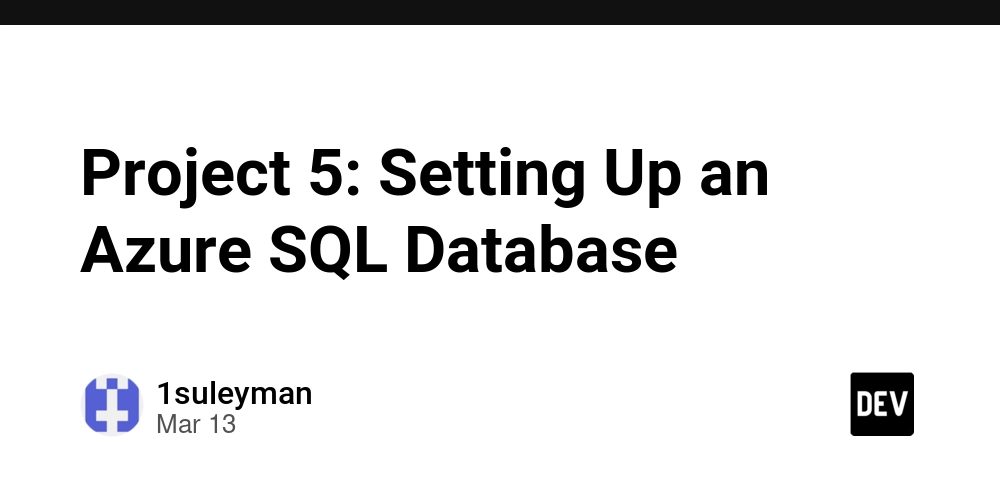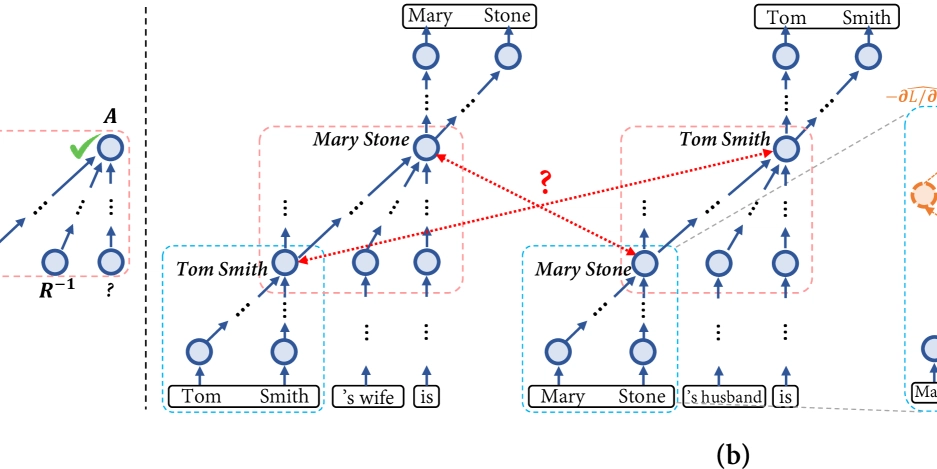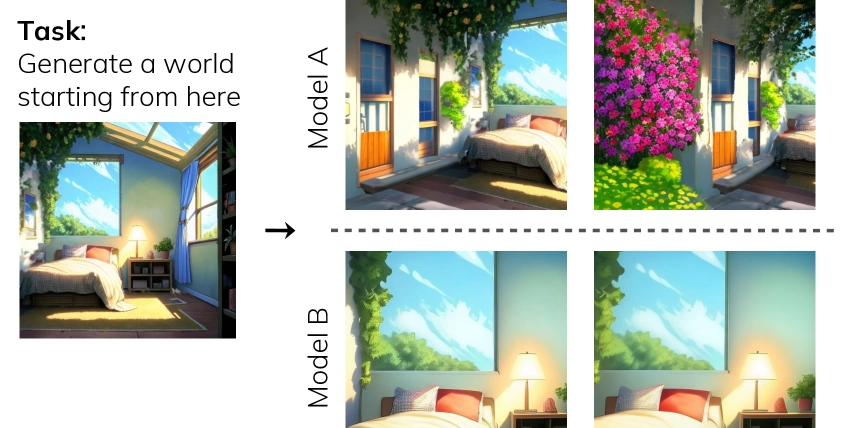Project 5: Setting Up an Azure SQL Database
Introduction In this project, I focused on understanding the fundamentals of working with Azure SQL Database. By the end of this project, I was able to create, configure, and manage SQL databases within Azure. I also learned how to connect to the database, run SQL queries, and perform common database management tasks such as creating tables and adding data. This hands-on experience with Azure SQL Database provided me with essential skills for managing databases in the cloud. Project Overview In this project, I: Set up and configured an Azure SQL Database. Performed basic SQL operations, including creating tables, inserting data, and running queries. Learned how to securely manage access to the SQL Database using SQL Authentication and Microsoft Entra (formerly Azure AD). Let me walk you through the steps I followed to complete this project. Step-by-Step Guide Step 1: Create an Azure SQL Database 1️⃣ Navigate to Azure Portal: In the Azure Portal, I clicked on Create a resource and searched for "SQL Database". 2️⃣ Configure SQL Database Settings: Subscription: I selected the active subscription I was working under. Resource Group: I created a new resource group called az-rg1. Database Name: I named my database myfirsteverdatabase to keep it unique. SQL Server: Under the Server section, I clicked Create new to set up a new SQL Server. Server Name: I named the server bobsdiner. Server Admin Login: I created an admin username adminuser and set a strong password. Location: I selected UK South for better performance. Authentication Method: I chose SQL Authentication. 3️⃣ Networking and Security: Networking: I allowed public endpoint access and selected "Allow Azure services and resources to access this server". Security: I left the default security settings. 4️⃣ Review & Create: After reviewing the configuration, I clicked Review + Create and then Create to provision my SQL database. Step 2: Connect to Your Azure SQL Database Once the SQL Database was set up, I connected to it to run SQL queries and perform database operations. 1️⃣ Using the Azure Portal Query Editor: In the Azure Portal, I navigated to my SQL Database and clicked on Query editor (preview). I signed in with the Server Admin login credentials to access the database and execute SQL queries directly within the portal. Step 3: Managing Your Azure SQL Database Now that I was connected to the database, I performed basic database management tasks such as creating tables, adding data, and running queries. 1️⃣ Creating a Table: I created a simple Employees table using the following SQL query: CREATE TABLE Employees ( EmployeeID INT PRIMARY KEY, FirstName NVARCHAR(50), LastName NVARCHAR(50), Email NVARCHAR(100), HireDate DATE ); 2️⃣ Inserting Data: I inserted data into the Employees table using this query: INSERT INTO Employees (EmployeeID, FirstName, LastName, Email, HireDate) VALUES (1, 'John', 'Doe', 'john.doe@example.com', '2022-01-01'); 3️⃣ Running Basic Queries: I ran a simple SELECT query to retrieve the data from the Employees table: SELECT * FROM Employees; Step 4: Clean Up Resources After completing the project, I made sure to clean up my resources to avoid unnecessary charges. 1️⃣ Delete the Resource Group: In the Azure Portal, I deleted the resource group az-rg1, which contained the SQL database and associated resources. Conclusion In this project, I successfully: Created and configured an Azure SQL Database. Performed basic SQL operations, such as creating tables, inserting data, and running queries. Managed access using SQL Authentication. By completing this project, I gained hands-on experience with Azure SQL Database, which is a crucial skill for managing databases in the cloud. I can now efficiently manage SQL databases on Azure, perform essential database tasks, and configure secure access to my databases. Credits : https://www.datacamp.com/blog/azure-project-ideas

Introduction
In this project, I focused on understanding the fundamentals of working with Azure SQL Database. By the end of this project, I was able to create, configure, and manage SQL databases within Azure. I also learned how to connect to the database, run SQL queries, and perform common database management tasks such as creating tables and adding data. This hands-on experience with Azure SQL Database provided me with essential skills for managing databases in the cloud.
Project Overview
In this project, I:
- Set up and configured an Azure SQL Database.
- Performed basic SQL operations, including creating tables, inserting data, and running queries.
- Learned how to securely manage access to the SQL Database using SQL Authentication and Microsoft Entra (formerly Azure AD).
Let me walk you through the steps I followed to complete this project.
Step-by-Step Guide
Step 1: Create an Azure SQL Database
1️⃣ Navigate to Azure Portal:
- In the Azure Portal, I clicked on Create a resource and searched for "SQL Database".
2️⃣ Configure SQL Database Settings:
- Subscription: I selected the active subscription I was working under.
-
Resource Group: I created a new resource group called
az-rg1. -
Database Name: I named my database
myfirsteverdatabaseto keep it unique. -
SQL Server: Under the Server section, I clicked Create new to set up a new SQL Server.
-
Server Name: I named the server
bobsdiner. -
Server Admin Login: I created an admin username
adminuserand set a strong password. - Location: I selected UK South for better performance.
- Authentication Method: I chose SQL Authentication.
-
Server Name: I named the server
3️⃣ Networking and Security:
- Networking: I allowed public endpoint access and selected "Allow Azure services and resources to access this server".
- Security: I left the default security settings.
4️⃣ Review & Create:
- After reviewing the configuration, I clicked Review + Create and then Create to provision my SQL database.
Step 2: Connect to Your Azure SQL Database
Once the SQL Database was set up, I connected to it to run SQL queries and perform database operations.
1️⃣ Using the Azure Portal Query Editor:
- In the Azure Portal, I navigated to my SQL Database and clicked on Query editor (preview).
- I signed in with the Server Admin login credentials to access the database and execute SQL queries directly within the portal.
Step 3: Managing Your Azure SQL Database
Now that I was connected to the database, I performed basic database management tasks such as creating tables, adding data, and running queries.
1️⃣ Creating a Table:
-
I created a simple Employees table using the following SQL query:
CREATE TABLE Employees ( EmployeeID INT PRIMARY KEY, FirstName NVARCHAR(50), LastName NVARCHAR(50), Email NVARCHAR(100), HireDate DATE );
2️⃣ Inserting Data:
-
I inserted data into the Employees table using this query:
INSERT INTO Employees (EmployeeID, FirstName, LastName, Email, HireDate) VALUES (1, 'John', 'Doe', 'john.doe@example.com', '2022-01-01');
3️⃣ Running Basic Queries:
-
I ran a simple SELECT query to retrieve the data from the Employees table:
SELECT * FROM Employees;
Step 4: Clean Up Resources
After completing the project, I made sure to clean up my resources to avoid unnecessary charges.
1️⃣ Delete the Resource Group:
- In the Azure Portal, I deleted the resource group
az-rg1, which contained the SQL database and associated resources.
Conclusion
In this project, I successfully:
- Created and configured an Azure SQL Database.
- Performed basic SQL operations, such as creating tables, inserting data, and running queries.
- Managed access using SQL Authentication.
By completing this project, I gained hands-on experience with Azure SQL Database, which is a crucial skill for managing databases in the cloud. I can now efficiently manage SQL databases on Azure, perform essential database tasks, and configure secure access to my databases.
Credits : https://www.datacamp.com/blog/azure-project-ideas










































































































































































![[The AI Show Episode 142]: ChatGPT’s New Image Generator, Studio Ghibli Craze and Backlash, Gemini 2.5, OpenAI Academy, 4o Updates, Vibe Marketing & xAI Acquires X](https://www.marketingaiinstitute.com/hubfs/ep%20142%20cover.png)














































































































































































































































.jpg?#)















































































































































![YouTube Announces New Creation Tools for Shorts [Video]](https://www.iclarified.com/images/news/96923/96923/96923-640.jpg)

![Apple Faces New Tariffs but Has Options to Soften the Blow [Kuo]](https://www.iclarified.com/images/news/96921/96921/96921-640.jpg)
































































































































